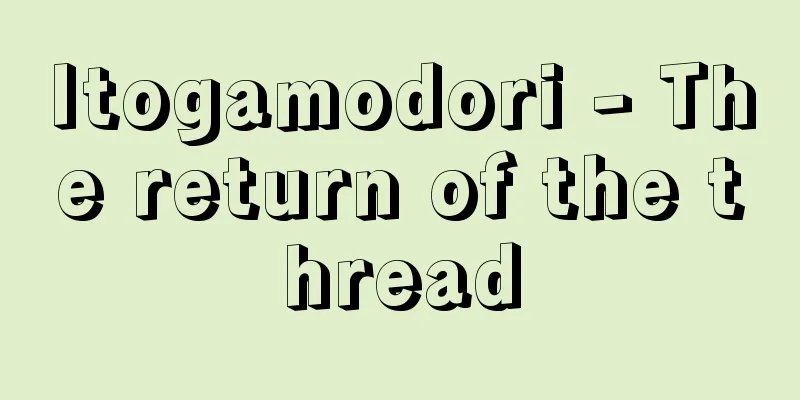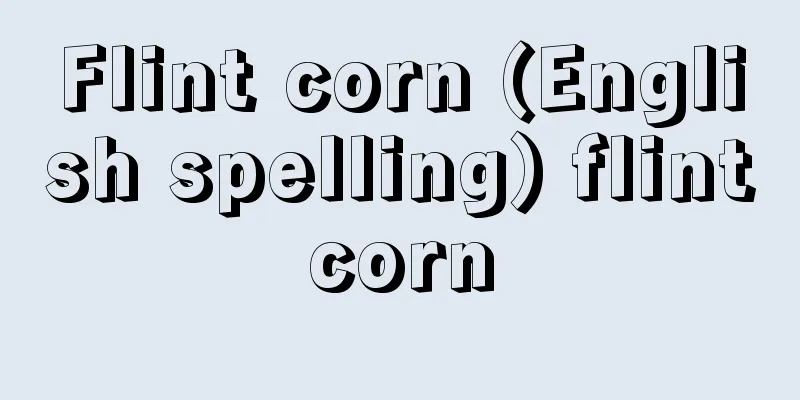Summer solstice - Geshi

|
One of the 24 solar terms in the Chinese and Japanese lunisolar calendar. It is the time when the sun passes the summer solstice, the northernmost point on the ecliptic, and the day that includes this is the summer solstice. It is when the sun's apparent ecliptic longitude reaches 90 degrees, which corresponds to around June 21st in the current calendar. On this day, the sun is furthest north from the equator (declination 23.5 degrees), and in the Northern Hemisphere, the daytime hours are the longest and the nighttime hours are the shortest of the year. In the Arctic Circle, the sun never sets below the horizon, resulting in the phenomenon known as the midnight sun. In contrast, in the Southern Hemisphere, the daytime hours are the shortest and the nighttime the longest, and in the Antarctic Circle, the sun remains below the horizon all day and never appears. [Toshio Watanabe] weatherIn mainland Japan, excluding Hokkaido, the rainy season lasts for about 20 days before and after the summer solstice. That is, the 20 days before the summer solstice are the early rainy season, where the amount of rain is not so much, but long periods of drizzle continue. After the summer solstice, until the end of the rainy season in mid-July, the late rainy season occurs, with intermittent heavy downpours. Around the summer solstice, halfway between the early and late rainy seasons, there is often a break in the rainy season, and at such times, midsummer clear skies appear for a time, but there are also years when this continues and the rainy season turns into a dry rainy season (karatsuyu). In this way, from a meteorological perspective, the summer solstice is the center of the important rainy season that characterizes Japan's seasons. [Nemoto Junkichi] FolkloreIn the Kitasaku region of Nagano Prefecture, the Tajima region of Hyogo Prefecture, and Jobo County in Okayama Prefecture, the summer solstice is called chuu. In Japan, there are no special celebrations for the summer solstice, but the 11th day after the summer solstice, called Hangesho or Hange, is considered an important day for farming. If rice planting is not completed by this day, the harvest is halved, which is called "hange hansaku." In the Osaka area, it is customary to eat octopus from the summer solstice to the summer. It is said that this is to pray for the rice roots to spread well in the ground like octopus legs. In the Kanto region and other areas, people make roasted rice cakes out of new wheat and offer them to the gods. In the counties of Shimane and Kumamoto Prefectures, people also make wheat dumplings and manju to offer to the gods. In the Aso region of Kumamoto Prefecture, there is a saying that goes, "Don't wait until the summer solstice, but don't wait until the summer solstice," which means that rice planting should be done a little after the summer solstice, so as not to pass the summer solstice. It is said that poison falls from the sky and poisonous plants grow on the day of the summer solstice, and there are various taboos. It is said that you should not enter a bamboo forest on this day. It is said that if you see bamboo flowers blooming, you will die. It is also said that if you eat vegetables or fruits from the fields on this day, you will get sick. In the Tamana region of Kumamoto Prefecture, horses are never allowed to eat green grass on this day. In the Hiraka region of Akita Prefecture, it is said that if you poke your eyes with grass on the day of the summer solstice, you will go blind. In a strange legend, in the Aso region of Kumamoto Prefecture, eating raw plums on the day of the summer solstice is taboo, as it is said that you will go bald, and in the Yatsushiro region of the same prefecture, it is said that if you sleep in the morning on this day, you will go bald, so people have been getting up early since ancient times. The summer solstice was also a turning point in people's lives. In the Amakusa region of Kumamoto Prefecture, Hangeshi is the day to start swimming, and before that, people do not enter the water. In the Aso region of the same prefecture, there is a day called Dayurushi, where cattle are allowed to graze from the 88th day of the year until Hangeshi, and after that they must be brought home. In the western region of Kagawa Prefecture, Hangeshi is the end of the first half of the year. In foreign countries, China had a summer solstice event. However, perhaps due to the lunar calendar and other factors, some events have been confused with the Boy's Day festival. According to the Jingchu Suijiki, on the summer solstice festival, people eat rice dumplings called "kakusho," and also wear linden leaves in their heads and five-colored threads around their arms to make "longevity strings," which is similar to the event held on May 5th. In addition, people would pick chrysanthemums to make ash to protect wheat from insect damage. In Europe, summer solstice events were also widely held. In England, the summer solstice festival is not held on the exact day of the summer solstice, but on the birthday of St. John three days later. Events differ from country to country, but one thing they all have in common is the holding of a fire festival. People dance around the summer solstice fire and jump over it. They drink alcohol and make a lot of noise. Fires are often made on high ground, and it is believed that if the smoke blowing from upwind blows over the crops in the fields, it will bring about a good harvest. In the Provence region of France, children walk around collecting firewood for the fire, which is very similar to the Dondoyaki festival held on Little New Year in Japan. In the Prussian region of Germany, the summer solstice fire is believed to ward off lightning, magic, and rinderpest. In Hungary, snakes start to run rampant around the summer solstice, and it is believed that the fire festival will drive away the snakes and protect the crops. It is said that the summer solstice fire festival was held to prevent the days from getting shorter and shorter after this point, so fires were lit to prevent the sun's energy from waning. [Oto Tokihiko] [Reference] |Source: Shogakukan Encyclopedia Nipponica About Encyclopedia Nipponica Information | Legend |
|
中国や日本の太陰太陽暦の二十四節気(にじゅうしせっき)の一つ。太陽が黄道上もっとも北にある夏至点を通過する時刻で、これを含む日が夏至の日である。太陽の視黄経が90度に達するときで、現行暦では6月21日ころにあたる。この日太陽は赤道からもっとも北に離れ(赤緯23度半)、北半球では一年中で昼の時間がもっとも長く、夜の時間はもっとも短い。北極圏では終日太陽は地平線下に没することはなく、いわゆる白夜の現象を呈する。これに反し、南半球では昼は最短、夜は最長となり、南極圏では終日太陽は地平線下にあって姿を現すことはない。 [渡辺敏夫] 気象北海道を除く日本の本土は、夏至の前後およそ20日ずつが梅雨期間である。すなわち夏至以前の20日間は梅雨前期にあたり、ここでは雨量はさして多くないが、しとしと型の長雨が続く。夏至以後、7月中旬の梅雨明けまでは梅雨後期にあたり、集中豪雨型の大雨が断続する。前期と後期の中間のおよそ夏至のころは、梅雨は中休みをすることが多く、そのようなときには一時、真夏の晴天が現れるが、これが持続して空梅雨(洞梅雨)(からつゆ)となってしまうような年もみられる。このように夏至は、気象学的には日本の季節を特徴づける重要な雨期の中心になっているのである。 [根本順吉] 民俗長野県北佐久地方、兵庫県但馬(たじま)地方、岡山県上房(じょうぼう)郡などでは夏至のことをチュウという。日本では夏至の行事としては取り立てて記するものはないが、夏至より11日目にあたる半夏生(はんげしょう)または半夏(はんげ)という日は農作のうえでだいじな日とされている。田植はこの日までに終わらないと、「半夏半作」といって収穫が半減するという。大阪近郊では夏至から半夏までタコを食べる習慣がある。タコの足のように稲の根がよく地面に広がりつくようにと願うのだという。関東地方などでは新小麦で焼き餅(もち)をつくって神に供える。島根県や熊本県の各郡でも小麦の団子やまんじゅうをつくって神に供えている。熊本県阿蘇(あそ)地方には、「チュウはずらせ半夏は待つな」といって、田植は夏至よりすこしあとに、半夏を過ぎないようにとの言い習わしがある。半夏生の日には天から毒が降り、毒草が生えるなどといって、いろいろの禁忌がある。この日竹林に入ってはならぬという。タケの花の咲いているのを見ると死ぬという。また畑の野菜や果物をこの日食べると病気になるという。熊本県玉名地方ではこの日ウマにけっして青草を食べさせない。秋田県平鹿(ひらか)地方では半夏の日に草で目を突くと盲目になるといっている。変わった言い伝えでは、熊本県阿蘇地方では半夏の日に生梅を食べると頭がはげるといって忌み、同県八代(やつしろ)地方ではこの日朝寝をすると頭がはげるといって昔から早起きしたという。半夏生はまた生活上の一つのくぎりとなっていた。熊本県の天草(あまくさ)地方では半夏の日は水泳ぎを始める日で、その前には水に入らない。同県阿蘇地方ではダユルシといって八十八夜から半夏生までの間にウシの放牧を許されており、それ以後は家へ連れていかねばならない。香川県の西部地方では半夏生を上半期の決算期としている。 外国では、中国で夏至節の行事があった。ただし陰暦などの関係によると思うが、端午の節供と混同した行事がみられる。『荊楚歳時記(けいそさいじき)』によれば、夏至節には「角黍(かくしょ)」といってちまきを食すとあり、また楝(おうち)の葉を頭に挿して、五色の糸を臂(ひじ)に掛け「長命縷(ちょうめいる)」となしたとあるのは、5月5日の行事と同様である。そのほか、キクをとって灰をつくり小麦の虫害を防ぐことも行われた。 ヨーロッパでも、夏至の行事は広く行われていた。イギリスでは夏至祭といっても正確な夏至の日でなく、その3日後の聖ヨハネの誕生日に行われている。国々によって行事には異同があるが、共通していることは火祭の行われることである。夏至の祝い火の周りを人々は踊り歩き、火を跳び越えたりする。酒を飲んで大騒ぎするのである。火は多く小高い所で焚(た)くので、風上から吹き付ける煙が畑の作物の上を吹くと豊作になると信じられている。フランスのプロバンス地方では子供たちが火焚きの薪(たきぎ)を集めて歩くというのは、日本の小正月(こしょうがつ)のどんど焼きとよく似ている。ドイツのプロシア地方では夏至の祝い火は落雷除(よ)け、魔法除け、牛疫除けと信じられている。ハンガリーでは夏至のころはヘビが跳梁(ちょうりょう)しだすが、火祭は蛇を駆逐して作物の収穫を守ってくれると信じられている。夏至の火祭は、これを過ぎると日がだんだんと短くなるので、これを防ぐために火を焚いて太陽の活力の衰えるのを防止するにあったといわれている。 [大藤時彦] [参照項目] |出典 小学館 日本大百科全書(ニッポニカ)日本大百科全書(ニッポニカ)について 情報 | 凡例 |
<<: Geji (house centipede) - Geji (English spelling)
Recommend
Furnace - ro (English spelling)
A device designed to heat or melt something. A kil...
Kinsei Mountain
…A post station on the Tosando road located at th...
Kumtura Caves
A group of Buddhist caves excavated at the foot of...
Ocean current bottle
Also known as drift bottles. These are artificial ...
Germination - Hatsuga
It refers to the resumption of growth of the seed...
Outer sanctuary
〘 noun 〙 In a shrine or temple, the place outside ...
Harald Cramér
1893‐1985 Swedish mathematician. Born in Stockholm...
International Confederation of Free Trade Unions
…the International Confederation of Free Trade Un...
Kaden
… Tenant dispute [Abiko Rin] 【China】 In China, th...
Gomphidae
...A general term for insects in the Gomphidae fa...
Roussel, KX (English spelling) RousselKX
...The group's name, derived from the Hebrew ...
Tainoura
This is a coastline in Uchiura Bay, Kamogawa City...
Kamasaki [Hot Spring] - Kamasaki
A hot spring in Shiroishi City, southern Miyagi Pr...
Pole of Cold
The coldest spot in the Northern and Southern Hem...
Katsura Kogoro
The former name of Kido Takayoshi, a politician fr...
![Shioya [town] - Shioya](/upload/images/67cbbb4bb3b4b.webp)





![Abu Musa [island] - Abu Musa](/upload/images/67cf365a60500.webp)


